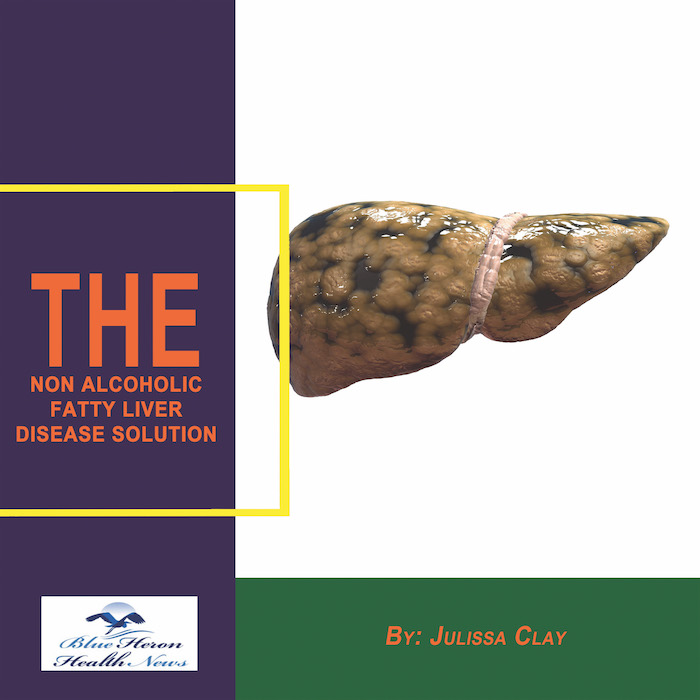
The Non Alcoholic Fatty Liver Strategy™ By Julissa Clay the program discussed in the eBook, Non Alcoholic Fatty Liver Strategy, has been designed to improve the health of your liver just by eliminating the factors and reversing the effects caused by your fatty liver. It has been made an easy-to-follow program by breaking it up into lists of recipes and stepwise instructions. Everyone can use this clinically proven program without any risk. You can claim your money back within 60 days if its results are not appealing to you.
How does fatty liver disease cause itching?
Fatty liver disease—especially the more advanced conditions like nonalcoholic steatohepatitis (NASH) or cirrhosis—is potentially capable of causing itching (also known in medicine as pruritus). Itching isn’t always there at the earliest phases of fatty liver disease, but it starts becoming more and more common with declining liver function. Here is how and why:
???? 1. Bile Acid Accumulation (Cholestasis)
As fatty liver disease progresses, liver cells can become inflamed or damaged, which disrupts bile flow. This is known as cholestasis.
Bile acids begin to accumulate in the blood instead of being released normally into the intestines.
Bile acids deposit in the skin, inflame nerve endings, and cause itching—particularly on the hands, feet, arms, and back.
Itching is typically at night and not necessarily followed by a rash.
???? 2. Toxic Build-Up
In severe liver disease:
The ability of the liver to detoxify the blood is impaired.
Toxins and waste products (e.g., bilirubin, histamine, and lysophosphatidic acid) can build up in the blood.
These compounds are able to stimulate nerve endings in the skin, leading to a persistent itch.
???? 3. Nerve Sensitivity Alteration
Liver disease can impair nerve transmission mechanisms:
It can heighten sensitivity to itch-producing stimuli in the central and peripheral nervous systems.
This heightened sensitivity might make even small triggers feel really itchy.
???? 4. Hormonal and Immune Imbalance
Fatty liver disease upsets the balance between various hormones and immune components:
It might trigger the release of cytokines and inflammatory markers responsible for skin irritation.
Immune dysfunction at later stages can also make the skin more reactive.
???? Where and When Itching Occurs:
Usually local to palms, soles, arms, back, or legs
Usually worse at night or during heat
May occur without a rash, or lead to scratching injuries over time
???? 5. When to Be Concerned
Chronic itching in a patient with fatty liver disease may be a sign of:
Progression to cirrhosis
Involvement of the bile duct or prominent symptoms of primary biliary cholangitis (PBC)
A need to evaluate liver function tests and bile acids
???? Treatment Options
To manage itching from fatty liver disease:
Lifestyle:
Moisturize skin regularly
Avoid hot showers and strong soaps
Wear loose, cotton clothes
Take cool compresses or baking soda baths
Medical:
Cholestyramine – binds bile acids in the intestines (first-line treatment)
Ursodeoxycholic acid (UDCA) – enhances bile flow
Rifampin, naltrexone, or sertraline – utilized in resistant situations
Antihistamines – can be useful for sleep, but are not typically effective for itching from the liver
✅ Summary
Cause of Itching tMechanism
Bile acid buildup Accumulates in skin, irritates nerves
Toxin accumulationTextures nerve endings
Nerve sensitivityTextures more intensely
Inflammatory changes\tImmune activation of itch pathways
If you develop unexplained or worsening itching and fatty liver disease, you might want to have your liver function checked again. Would you like a set of questions to ask your physician regarding itching or home remedy advice?
Leg swelling, or peripheral edema, is a side effect of end-stage fatty liver disease, especially when it progresses to NASH and cirrhosis (advanced-stage scarring of the liver).
Fatty liver disease leads to leg swelling because:
???? 1. Develops into Cirrhosis
Advanced-stage fatty liver disease, with chronic inflammation and damage, leads to scarring or fibrosis and eventually cirrhosis.
Cirrhosis severely injures the liver and alters blood flow through the liver.
???? 2. Reduced Albumin Production
The liver normally produces albumin, a protein that keeps fluid in the blood vessels.
If the liver is injured, it produces less albumin.
Reduced albumin causes fluid to seep out of blood vessels into the tissues surrounding them, resulting in swelling in the ankles and legs.
???? 3. Portal Hypertension
Cirrhosis increases resistance of blood by the liver, raising portal vein pressure (the vein carrying blood from intestines to liver).
This is known as portal hypertension.
Fluid therefore accumulates and leaks into abdominal cavity (ascites) and legs (edema).
???? 4. Impact on Kidney Function
End-stage liver disease impacts kidney function (hepatorenal syndrome), reducing ability of kidneys to eliminate sodium and water.
This causes fluid retention and swelling, particularly in the legs, feet, and ankles.
???? Summary
Leg swelling from fatty liver disease is most frequently seen when it is advanced, disabling the liver’s ability to regulate fluid balance and blood flow. The primary mechanisms are:
Low albumin levels (reduced protein production)
Portal hypertension (increased blood pressure within the liver’s vessels)
Kidney dysfunction (impaired fluid clearance)
⚠️ When to Seek Medical Attention
Seek a healthcare provider if you have:
Recurrent or worsening leg swelling
Swelling with abdominal bloating, fatigue, or jaundice
Existing liver disease and new swelling
Do you want to know what to do to treat leg swelling in liver disease, e.g., diet or drug?
The Non Alcoholic Fatty Liver Strategy™ By Julissa Clay the program discussed in the eBook, Non Alcoholic Fatty Liver Strategy, has been designed to improve the health of your liver just by eliminating the factors and reversing the effects caused by your fatty liver. It has been made an easy-to-follow program by breaking it up into lists of recipes and stepwise instructions. Everyone can use this clinically proven program without any risk. You can claim your money back within 60 days if its results are not appealing to you